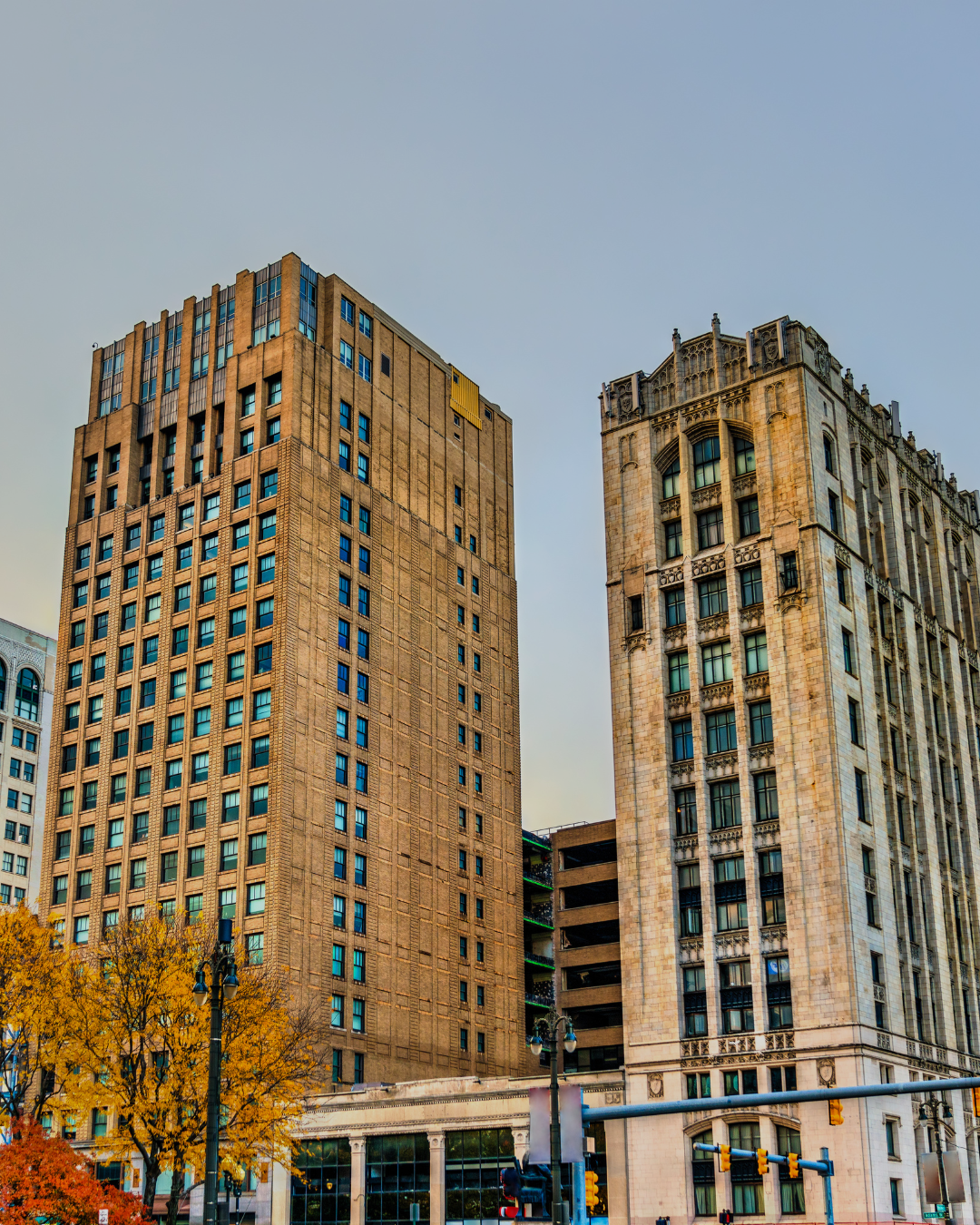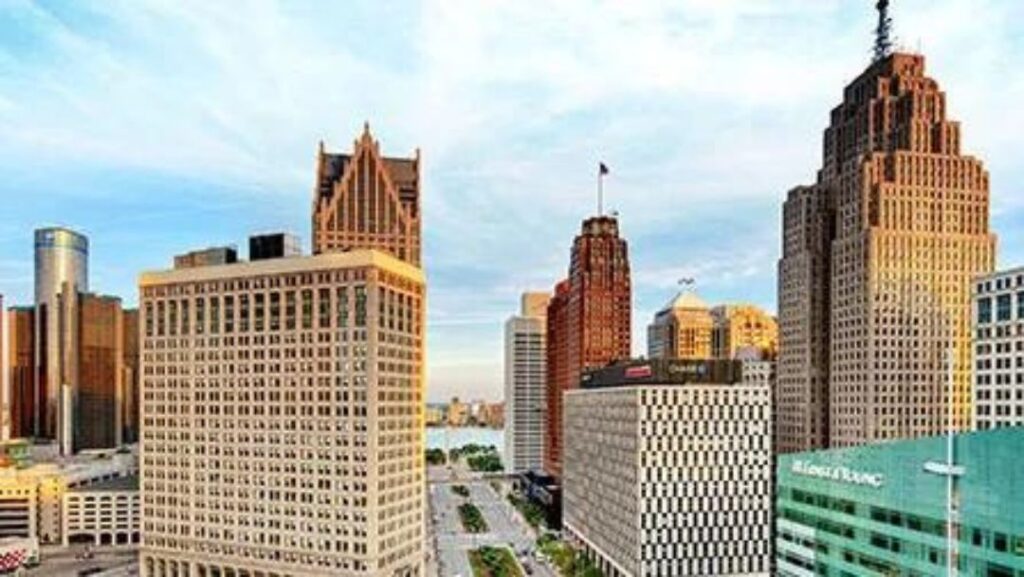Metro Detroit’s commercial construction landscape has undergone a remarkable transformation over the past century. From the grandeur of early 20th-century skyscrapers to the sleek, modern designs that dominate the skyline today, the region’s architectural evolution is a testament to its dynamic economic and cultural history.
But while new builds may boast cutting-edge technology and contemporary aesthetics, they are increasingly drawing inspiration from the rich architectural heritage that has long defined Detroit and its surrounding areas.
This blend of old and new is not only reshaping the city’s commercial construction sector but also revitalizing its urban core.
A Legacy of Architectural Grandeur
Detroit’s architectural legacy is rooted in the early 1900s when the city was booming as the epicenter of the automotive industry. The skyline became a canvas for some of the most iconic buildings of the era, designed by renowned architects like Albert Kahn, Wirt C. Rowland, and Louis Kamper. Structures such as the Guardian Building, the Fisher Building, and the Book Tower showcased a mix of Art Deco, Neo-Gothic, and Beaux-Arts styles, with intricate detailing, ornate facades, and towering spires.
These historic buildings were not just functional spaces; they were statements of Detroit’s economic power and cultural ambition. They remain some of the most beloved landmarks in the city, revered for their craftsmanship and attention to detail. As Metro Detroit continues to evolve, these architectural gems serve as both a reminder of the city’s storied past and a source of inspiration for the future.
The Resurgence of Historic Influence
In recent years, there has been a noticeable trend in Metro Detroit’s commercial construction industry: the incorporation of historic architectural elements into modern designs. This movement is fueled by a growing appreciation for the city’s architectural heritage and a desire to create spaces that reflect Detroit’s unique identity.
Developers and architects are increasingly looking to the past to inform their new projects. Whether it’s the use of traditional materials like brick and limestone, the incorporation of classical proportions and symmetry, or the inclusion of decorative elements that harken back to the Art Deco era, these modern builds are paying homage to the city’s historic architecture. The result is a new wave of commercial properties that blend the best of both worlds—honoring the past while embracing the future!
Notable Examples in Metro Detroit
Several high-profile projects in Metro Detroit exemplify this trend. The Shinola Hotel in downtown Detroit, for example, is a prime example of how historic architecture can influence modern design. The hotel occupies several historic buildings, including the former T.B. Rayl Co. department store and a former Singer sewing machine store, which were meticulously restored and integrated into a cohesive, modern space. The result is a property that feels both timeless and contemporary, with a design that respects the past while catering to modern sensibilities.
Similarly, the renovation of the Metropolitan Building, now known as the Element Detroit at the Metropolitan, is another example of this trend. Originally built in 1925, the building was a jewelry emporium that sat vacant for decades. Today, it has been transformed into a boutique hotel that retains much of its original character, including its Gothic Revival architecture, while offering all the amenities expected of a modern luxury property.
The Impact on Suburban Developments
While much of the focus has been on downtown Detroit, the influence of historic architecture is also being felt in the suburbs of Metro Detroit, including areas like Birmingham, Bloomfield Hills, and Troy. These communities, known for their affluent populations and vibrant commercial districts, are seeing a surge in new developments that draw on historic design elements.
In Birmingham, for example, new commercial projects are often designed to complement the city’s existing historic buildings. Developers are mindful of maintaining the character of the downtown area, opting for designs that reflect the architectural styles of the early 20th century while incorporating modern conveniences. This approach not only enhances the aesthetic appeal of the city but also fosters a sense of continuity and connection to the past.
The Future of Commercial Construction in Metro Detroit
As Metro Detroit continues to grow and evolve, the influence of historic architecture on modern commercial construction is likely to persist. This trend speaks to a broader movement within the industry, where there is a recognition that new builds can and should respect the architectural context of their surroundings.
By drawing inspiration from the past, developers and architects are creating commercial spaces that are not only visually appealing but also rich in cultural significance. These projects contribute to the ongoing revitalization of Detroit and its suburbs, offering a unique blend of history and modernity that sets the region apart.
The evolution of commercial construction in Metro Detroit is a reflection of the area’s complex and multifaceted identity. As the city and its surrounding communities continue to reinvent themselves, the enduring legacy of historic architecture will undoubtedly play a central role in shaping the future of the region’s built environment.
Contact us now for commercial project inquiries!
Follow us!





